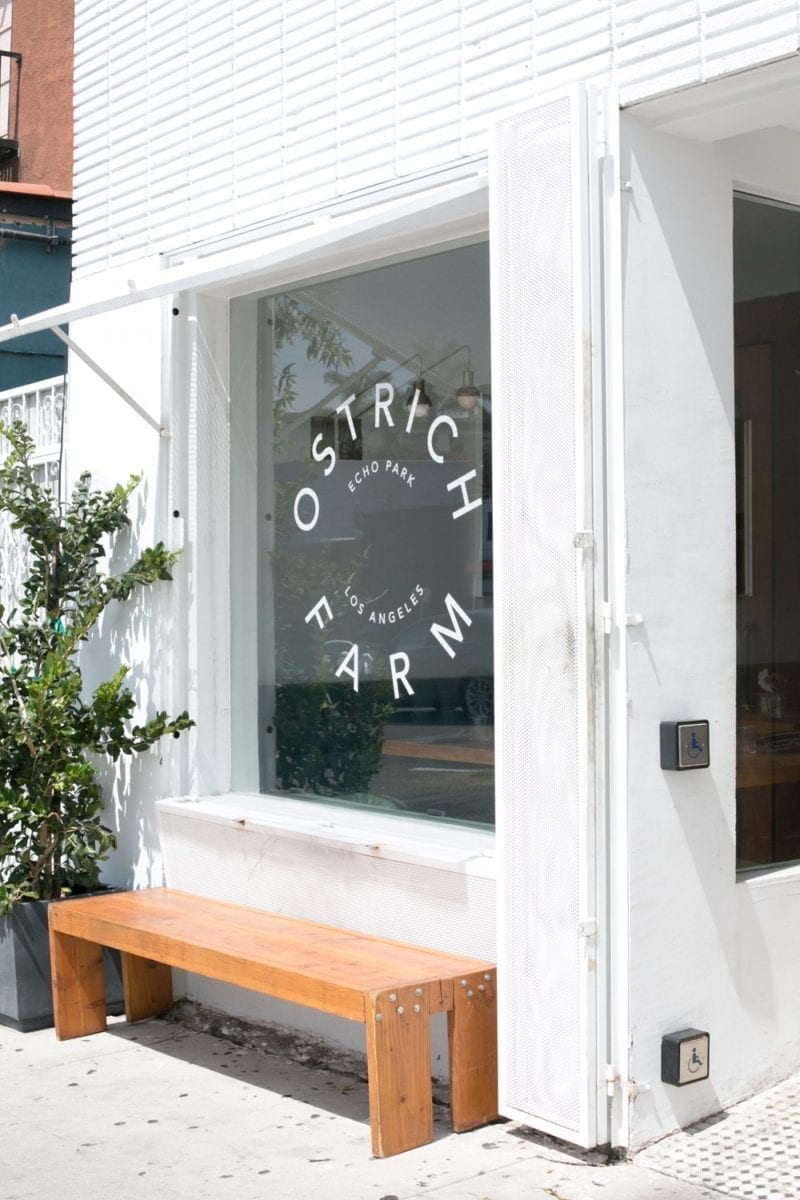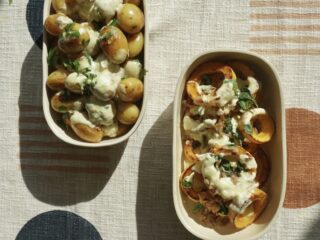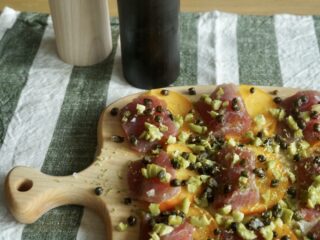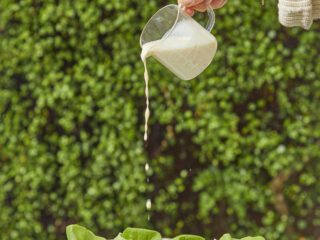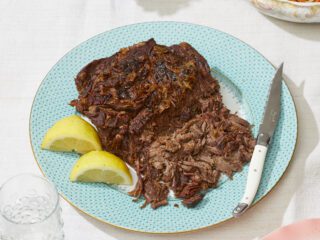There are many places in Los Angeles where we’d be happy to spend a lingering meal, but ranking near the very top would certainly be Ostrich Farm in Echo Park.
We interviewed owners Brooke Fruchtman and Jaime Turrey back in Issue 14, and there’s just something about the incoming spirit of gathering and good food on the horizon that made us want to revisit the article below.
*Bonus: Do NOT miss their recipe for salt baked red snapper at the end.
Ostrich Farm: Welcome to the Neighborhood
Interview by Tracy Le
Where there’s food, there’s family, and that’s what you feel when you step into LA’s gem of a restaurant, Ostrich Farm. Nestled in a modest location on Sunset Boulevard, in the sweet neighborhood of Echo Park, this place is a culinary experience for both your palate and your eyes. It houses exquisite and original selections made from fresh and seasonal ingredients (some of which even come from their new garden) and provides a space where everyone feels absolutely welcome.
When you first walk into Ostrich Farm, you notice the pristine aesthetic of their dream project.
“My inspiration for the design was the neighborhood itself,” says Brooke Fruchtman, co-owner of Ostrich Farm and wife to chef and co-owner, Jaime Turrey. “[Though] Echo Park is changing quickly, it’s also wonderfully rooted in its history, so we wanted a space that didn’t feel too contemporary nor referential of a bygone era. It’s just California cool and casual. And the name references the neighborhood’s history—the Ostrich Farm Railway used to run right down Sunset and into Griffith Park.” The perfection of its interior design may feel intimidating at first, but once in the space, the minimalistic influences paired with carefully chosen handmade details create a safe place. The motive behind opening up the restaurant is reflected in each aspect: “To create a space and product we love, and have faith that others will love and enjoy it too.”
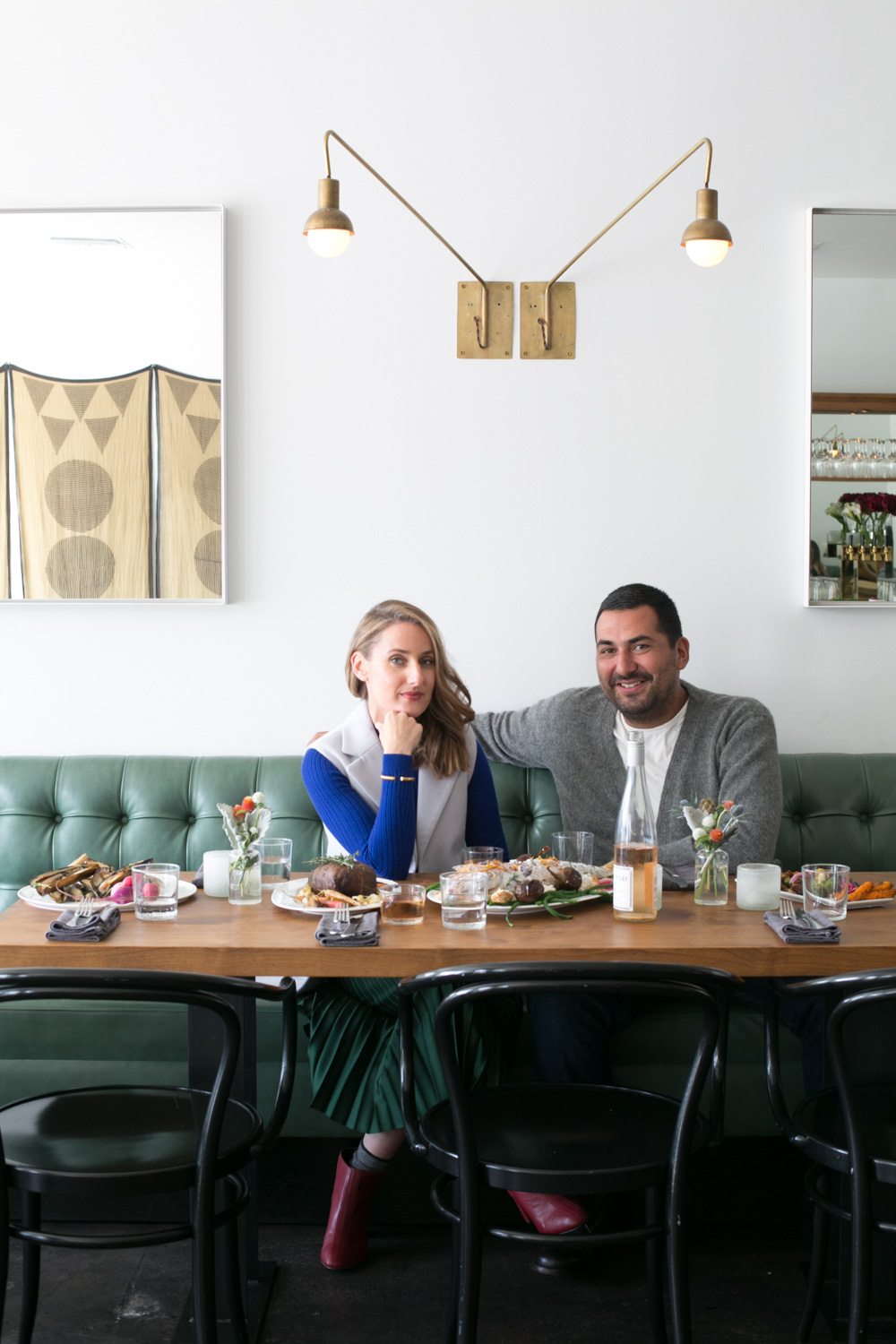
“It’s a family affair,” says Fruchtman. This power duo’s impressive partnership displays their individual talents and humbly communicates gratitude and creativity throughout the restaurant. The inside evokes a creative minimalism with handmade tapestries by local artisans, bronze lighting, and napkins they designed and had sewn by a family friend. While such craftsman details draw you in to feel right at home, the magic of Jaime’s culinary creations produces an aroma that seeps from the kitchen and into the common area—perhaps a braised beef pot pie or some slow roasted winter vegetables. It truly feels like you are stepping into a piece of art with all senses alert. It’s not unapproachable or fragile, and there’s a warm heart behind it that says, “Come in, and enjoy.” Their style of collaboration—aesthetic and culinary—is a rare thing indeed.
Jaime’s previous work includes a number of restaurants in San Francisco, as well as the operation of an acclaimed one-man pushcart called Monsieur Egg. He has also served as the executive chef at a café that trained homeless women in the culinary arts. Before Brooke decided to take on the opening of the restaurant and to run the front of house, she worked as an associate vice president at the Los Angeles County Museum of Art (LACMA). Their experiences, sacrifices and shared vision meld somehow in a seamless partnership. They also have two young children, Ines and Jude, who at age 6, can often be found helping their baker prepare desserts. I had a few minutes to find out a little more about the heartbeat behind the poetry that is this little gem.
Tracy Le: Why do you make food? What inspired you?
Jaime Turrey: There is no easy answer to why I make food—in fact, there are nights when I ask myself the very same question! In short, I enjoy the physicality, routine, process and intensity of cooking, especially over live fire. The physical rigor required helps quiet my mind, and leaves me nicely spent at the end of each evening.
I do not come from any great culinary tradition. I started as a bus boy and worked my way up. I had a powerful desire to prove myself to my then chef—the most talented, charismatic and volatile person I’ve ever known—and that propelled me forward, more so than any profound passion I had for food at the time. That part has grown over time and through travel.
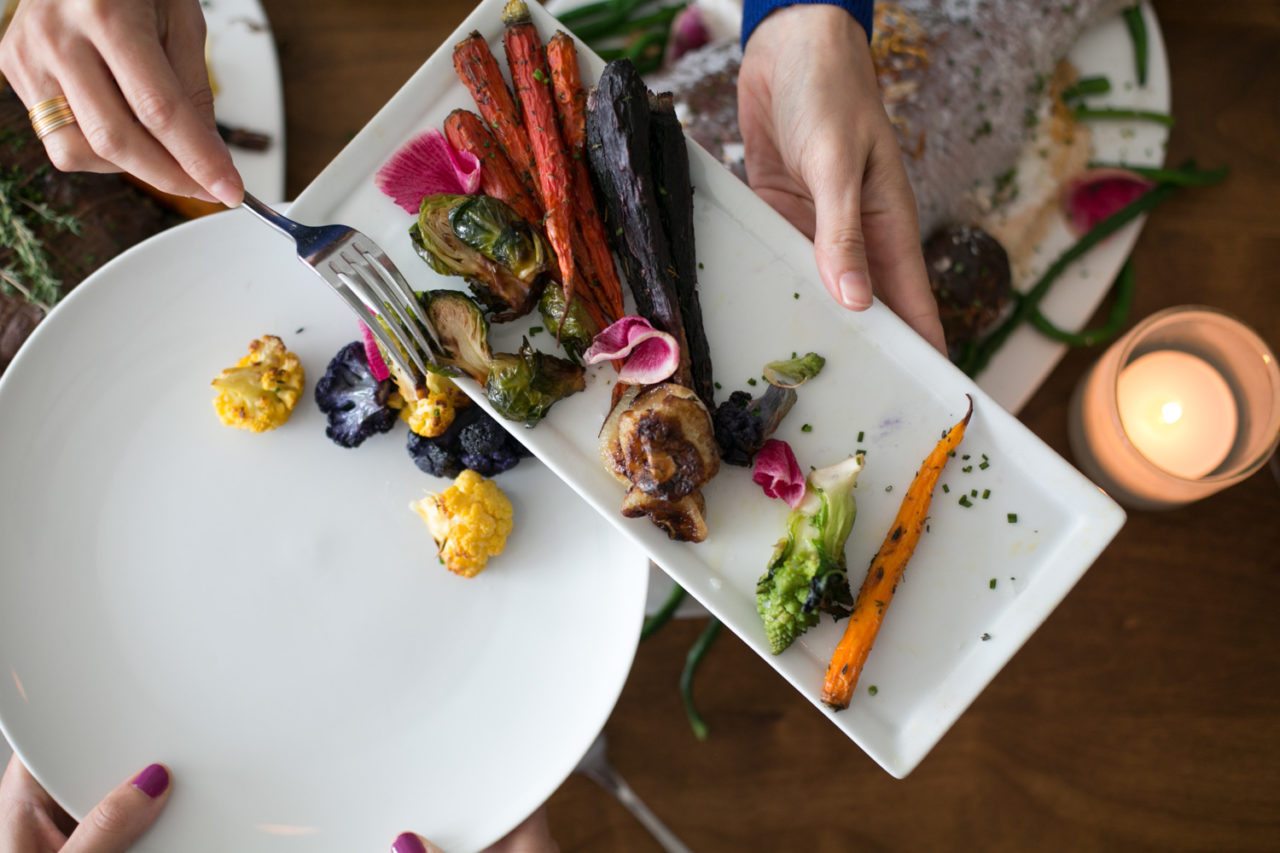
TL: What would you say is your and Jamie’s favorite part about the business? Is it cooking or serving?
Brooke Fruchtman: I think Jaime and I both love creating an experience, and our skill sets, which truly could not be more different, complement each other. I literally cannot make a piece of chicken if my life depended on it, but I do have a strong opinion on what the table should look like the chicken sits on, and what the napkin should feel like in your hands.
TL: What does Ostrich Farm want to be known for?
BF: My first instinct is to say that we don’t want to be known at all, but that’s not a great business strategy! However, I think my reaction points to the fact that our goal was only to be a simple, mom and pop, neighborhood restaurant. We never thought about being known by anyone who couldn’t walk here. But increasingly, we’re getting a larger audience, and with them, new expectations and opportunities. It’s wonderful but is also forcing us to think a bit differently about what our restaurant is, where it might be one or three or five years from now, and how our brand might grow in other ways outside of this space.
TL: Your business is one seeking to reshape community, how would you encourage food lovers to discover where it is they eat their favorite meals? What would you say to them?
I definitely did not understand how challenging it is to be a family-owned small business before opening Ostrich Farm, so now we make more of an effort to support other small businesses and restaurants, and get to know the owners. I know it means so much to us when our neighbors come in and tell us they’re happy we’re here. That being said, Jaime and I also have a strong aversion to the fetishization of food, so we do not judge where anyone eats!
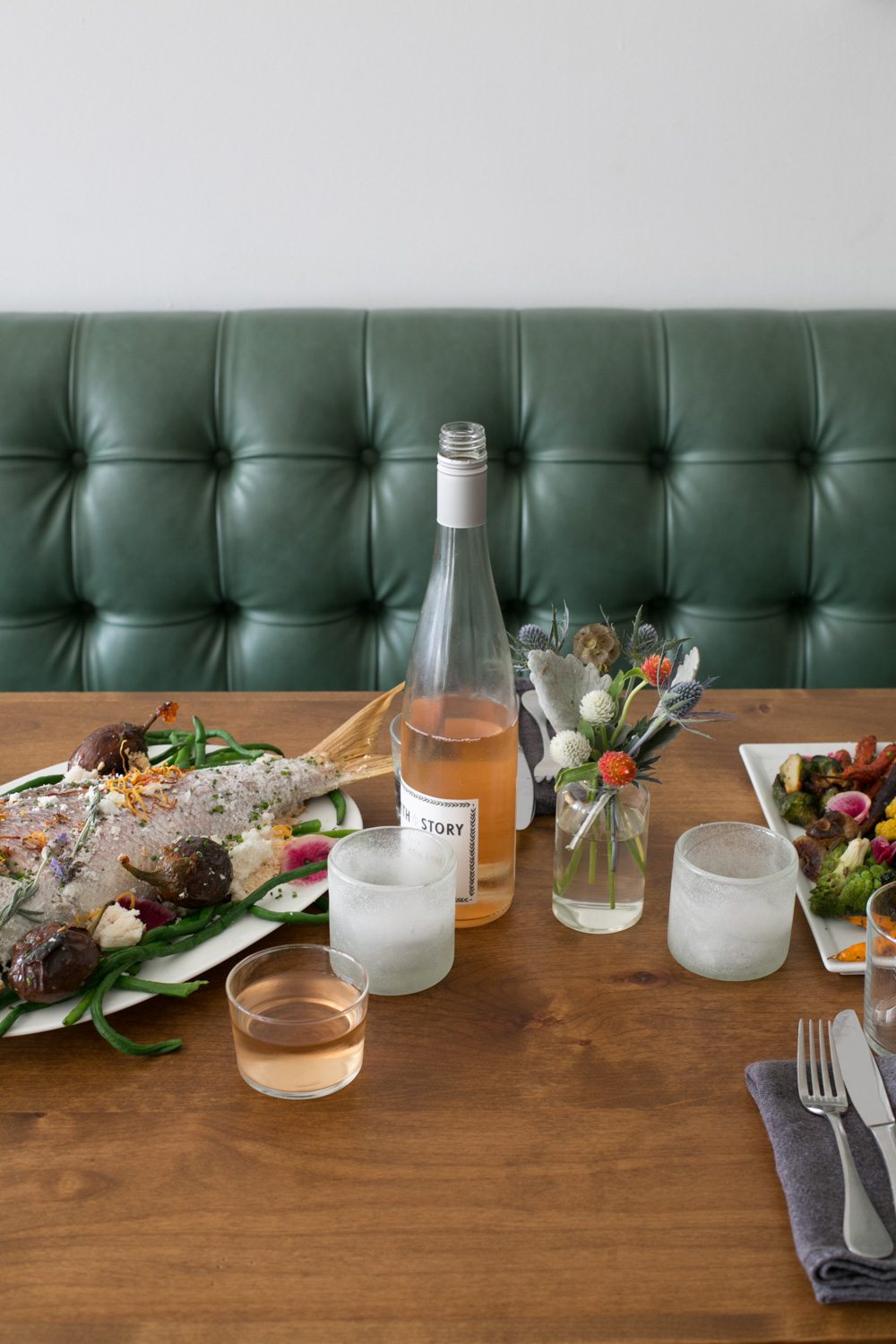
TL: What’s really important to you?
BF: Important to us as business owners: Having our customers feel good—warm and comfortable when they’re dining with us and hopefully feeling like they had just exactly what their belly and senses needed to refuel. Being a place where the community can gather—I don’t think we have enough of those in Los Angeles. Evolving the restaurant to meet the changing needs of the neighborhood. Getting to know our regular guests and have them feel more like they’re in our home than our business.
Important to us as people: Our children, of course. Trying to find balance when we’re constantly needed at the restaurant. Art and music. Trying to make small but important changes in our community around the issue of childhood obesity.
TL: What are some things you think people should value and look for when it comes to their dining experience?
As diners are becoming increasingly educated about and interested in food, there are obviously a core group of values many people are looking for. Organic, locally sourced, and increasingly plant-based are at the top of that list. But on a much simpler level, I encourage everyone to look for a happy staff. I think they’re reflective of what’s happening behind the scenes, so I always like to see servers who are genuinely glad to be there and treating their guests as if they were hosting them in their own homes. That’s a pretty good indication that they’re being treated well by the owners, and that matters to me, as both a restaurant owner and as a customer.
As we wrap up the interview, Brooke shakes her head in the sweetest way, she side-smiles right after sipping her white wine and says “We’re just doing what we love and feel like people are loving it, which is a good thing, right?”
Below is an original Ostrich Farm recipe Brooke and Jamie graciously let us share with you to try at home.
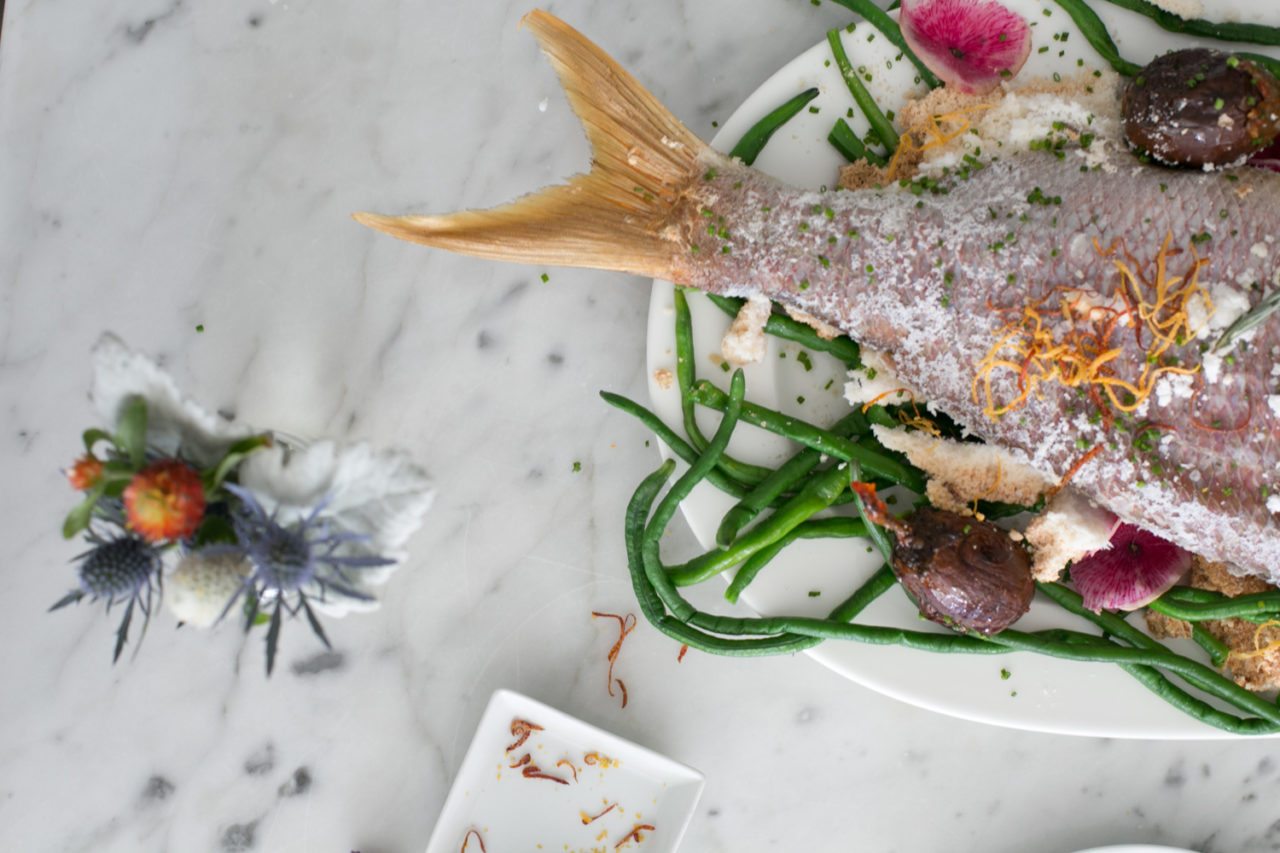
SALT BAKED RED SNAPPER
Total time: 45 minutes
1 4-pound whole red snapper, cleaned and scaled
1 bunch thyme
1 bunch parsley
Bay leaf
5 cups kosher salt
10 egg whites
1 cup water
1 lemon
Preheat oven to 420 F. Cut the fins off the fish and stuff it with thyme, parsley, bay leaf and lemon slices. Mix salt and egg whites well using your hands. Spread a layer of the salt mixture onto a roasting pan. Place the fish on top, and then spread the rest of the salt tightly on and around the fish.
Roast the fish in the oven for approximately 30 minutes. Test with a thermometer (poke all the way into the fish), which should read 120 F. Let the fish stand for 5 minutes.
Gently break away the salt crust, and then transfer the fish onto a clean surface. Use a paring knife to peel away the skin. Remove any remaining salt, fillet the fish, and serve.
Like this? There’s more in Issue 14. Become a Darling subscriber HERE to immediately gain access to all of our digital versions, plus get our latest issue delivered right to your doorstep.
Images via

